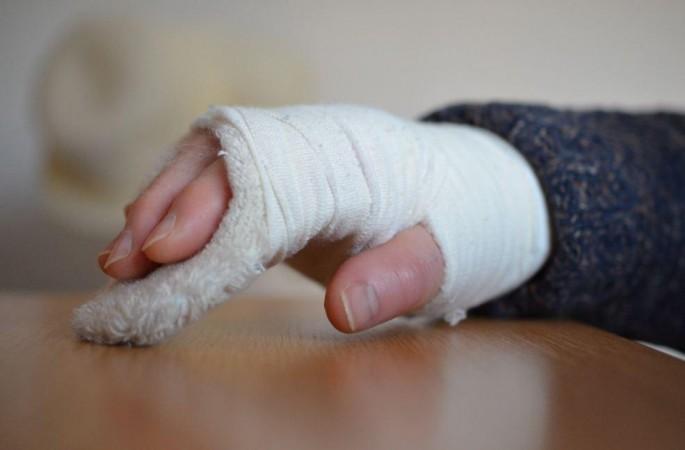Among the several medical conditions that can put a brake on or hinder a smooth childhood is the prevalence of epilepsy. However, it can be managed with timely medical intervention and lead to a relatively normal childhood. Now, a new study has found that a commonly prescribed anti-seizure drug may increase the risk of fractures in children with epilepsy.
According to a multi-institutional team of researchers, oxcarbazepine, a common anti-seizure medication, may increase the risk of fractures in children with epilepsy. The authors analyzed the effects of two of the most prescribed anti-seizure medications—levetiracetam and oxcarbazepine—on bone fragility in children between the ages of four and 13. The findings of the study were published in the journal Epilepsia.
"Prior to this study, little research had been conducted on how these two commonly prescribed medications impact bone fragility. These findings provide a vital insight into how two commonly prescribed medications impact children and adolescents during a critical period of bone development," said Dr. Daniel Whitney, lead author of the study, in a statement.
Most Commonly-prescribed Anti-seizure Drugs

Several factors during the pre-to-mid-puberty stage come together in the development of bone strength that peaks during adulthood. This includes aspects such as bone biology, bone structure, and genetics, among others. Any disordering in those crucial years of development can amalgamate to result in long-lasting effects on the musculoskeletal system.
Epilepsy is a chronic disease of the brain that affects people of all ages. According to the WHO, over 50 million people live with the condition worldwide. It causes seizures and is one of the most common disorders of the nervous system in the world. One experiences a seizure when one or more parts of the brain have burst/s of abnormal electrical signals which lead to the interruption of normal brain signals.
In children with epilepsy, the disorder can be managed with medications and diets. Several pediatric epilepsy cases go on to have seizure-free adulthoods. Levetiracetam and oxcarbazepine are two of the most commonly prescribed drugs as their side effect profile is relatively safer when compared to other available anti-seizure medications, stated Dr. Erin Fedak Romanowski.
Evaluating Link Between Medications and Fracture

For the study, the authors examined the rates of fracture incidence among 561 children and teenagers with epilepsy for a five-year period. They also observed fracture incidence rates in around 271,000 children who were not epileptic and were not under anti-seizure medications. Children with at least five years of continuous health plan enrollment—allowing for a 1-year baseline (eg. pre-ASM exposure)and four years of follow-up—were included in the study.
During the duration of the study, it was noted that 12.8 percent of children on oxcarbazepine had suffered a fracture. Compared to this, only 7.5 percent taking levetiracetam sustained a fracture. In children without epilepsy, 8.5 percent had a fracture.
"Knowing that oxcarbazepine is associated with a higher fracture risk will allow clinicians to be more thoughtful about to which children they prescribe the medication. Some children are going to be at higher risk for fracture than others at baseline; this is another factor to consider when evaluating the complexities of what drugs to use for whom and when," said Dr. Fedak Romanowski.
Complications of Treatments

While the findings of the study call for more research into the effects of epilepsy drugs, Dr. Whitney emphasized that it does not mean that oxcarbazepine is unsafe from prescription or that all child sufferers of epilepsy must be prescribed levetiracetam.
It is known that several children and adolescents with epilepsy are also ailed neurodevelopmental disorders such as cerebral palsy. This particular population is known to be prone to a higher risk of fracture. However, the side effects of levetiracetam may also affect the mental health of children. Struggles with mental health are one of the most common comorbidities for children with neurodevelopmental disorders.
This is known as iatrogenesis or medical concerns that arise on account of medical care. While anti-epilepsy medications fulfill their purpose of preventing seizures, some can result in can secondary complications such as bone fragility and behavior or mood issues.

"Our goal for patients is 'no seizures, no side effects'. However, there is no perfect anti-seizure medication, and all have potential adverse effects. But physicians can take all of this available information to take a personalized approach that optimizes individual patient health outcomes," noted Dr. Fedak Romanowski.
Further Research Required
Armed with the findings of the study, the team intends to ascertain the reason behind the link between oxcarbazepine and the rise in fragility fractures during the course of the specific window of time. The authors stated that it is only after this research it will be possible to evaluate whether it would be beneficial for children to receive supplementary therapies addressing bone fragility.
"As bone development has distinct periods that establish certain structural aspects, we are interested in studying if some medications alter the needed biology to form the bone's structure. If so, perhaps we can develop adjunct treatment to counteract these effects, so children can benefit by seizure reduction without weaker bones," concluded Dr. Whitney.















